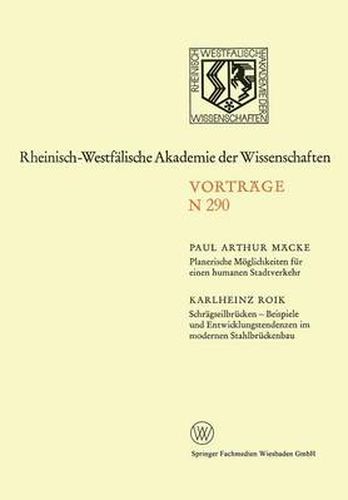Readings Newsletter
Become a Readings Member to make your shopping experience even easier.
Sign in or sign up for free!
You’re not far away from qualifying for FREE standard shipping within Australia
You’ve qualified for FREE standard shipping within Australia
The cart is loading…






This title is printed to order. This book may have been self-published. If so, we cannot guarantee the quality of the content. In the main most books will have gone through the editing process however some may not. We therefore suggest that you be aware of this before ordering this book. If in doubt check either the author or publisher’s details as we are unable to accept any returns unless they are faulty. Please contact us if you have any questions.
Urban traffic serves man. At all times, however, its technical formation has been connected with annoyances, and its development in our century verges on hostility towards life. Ways may be shown which, it’s true, will not create a sound world but will humanize urban traffic to a large extent. In this connection there is no ready-made solution. A number of measures prepared by the civil engineer for city planning must be purposefully realized. In this connection the idea of ‘environment’ formulated by Buchanan in London may be the basis for development. ‘Environment’ means a traffic- appeased and traffic-pacified city unit which is developed to be fit for human beings and ecologically beneficial. A street concept graded to functions is practical; planning principles for public urban transportation are com- plementary. From human needs mobility claims will arise which will be quantified. Natural patterns of behavior (principle of least resistance) will form the traffic image in the town. A humane town planning must allow for this human attitude towards the overcoming of areas which is also subject to human errors (such as errors of estimation). On the other hand, traffic resulting from the mobility claim is felt to be disturbing with regard to living and working especially since the citizen rapidly becomes more and mo. re sensitive to noise. Traffic separations and traffic pacification are required. Only the restoration of a sound psychological atmosphere in the adjacent roads of our towns will eventually result in humane traffic.
$9.00 standard shipping within Australia
FREE standard shipping within Australia for orders over $100.00
Express & International shipping calculated at checkout
This title is printed to order. This book may have been self-published. If so, we cannot guarantee the quality of the content. In the main most books will have gone through the editing process however some may not. We therefore suggest that you be aware of this before ordering this book. If in doubt check either the author or publisher’s details as we are unable to accept any returns unless they are faulty. Please contact us if you have any questions.
Urban traffic serves man. At all times, however, its technical formation has been connected with annoyances, and its development in our century verges on hostility towards life. Ways may be shown which, it’s true, will not create a sound world but will humanize urban traffic to a large extent. In this connection there is no ready-made solution. A number of measures prepared by the civil engineer for city planning must be purposefully realized. In this connection the idea of ‘environment’ formulated by Buchanan in London may be the basis for development. ‘Environment’ means a traffic- appeased and traffic-pacified city unit which is developed to be fit for human beings and ecologically beneficial. A street concept graded to functions is practical; planning principles for public urban transportation are com- plementary. From human needs mobility claims will arise which will be quantified. Natural patterns of behavior (principle of least resistance) will form the traffic image in the town. A humane town planning must allow for this human attitude towards the overcoming of areas which is also subject to human errors (such as errors of estimation). On the other hand, traffic resulting from the mobility claim is felt to be disturbing with regard to living and working especially since the citizen rapidly becomes more and mo. re sensitive to noise. Traffic separations and traffic pacification are required. Only the restoration of a sound psychological atmosphere in the adjacent roads of our towns will eventually result in humane traffic.